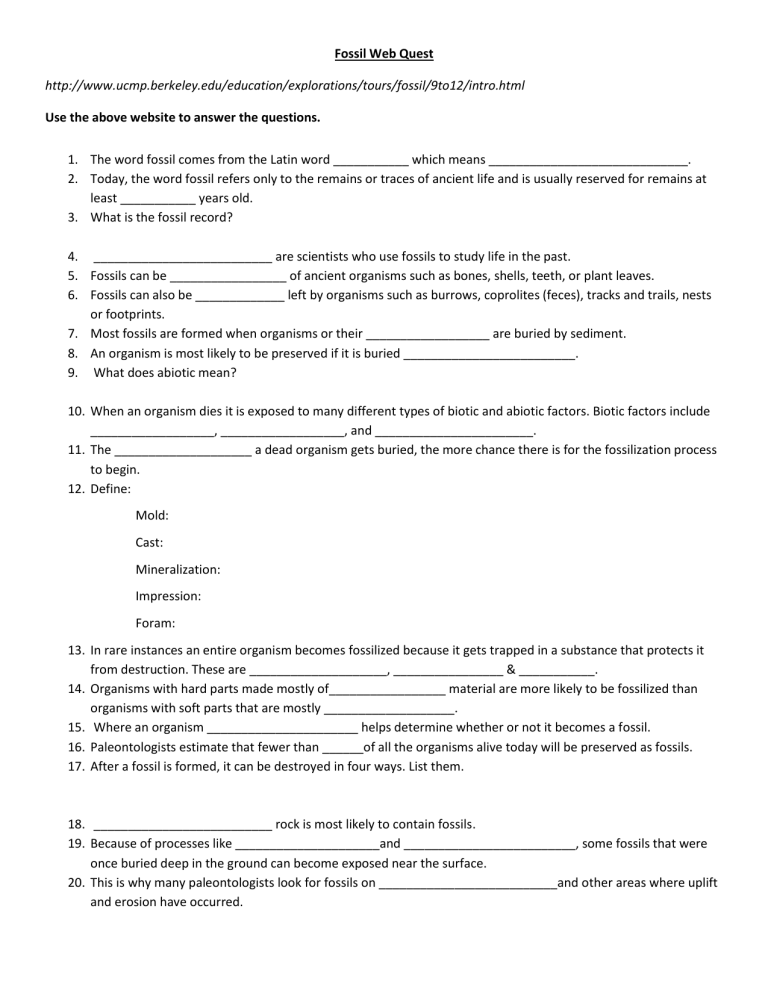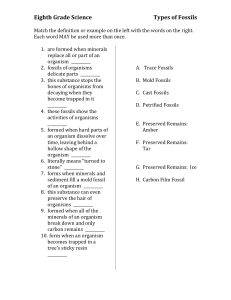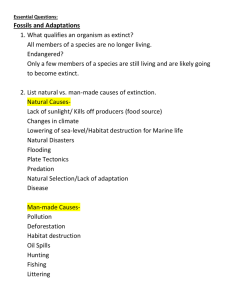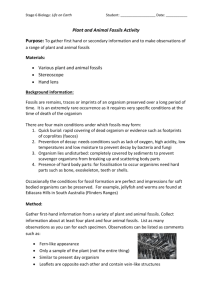Fossil Web Quest

Fossil Web Quest http://www.ucmp.berkeley.edu/education/explorations/tours/fossil/9to12/intro.html
Use the above website to answer the questions.
1.
The word fossil comes from the Latin word ___________ which means _____________________________.
2.
Today, the word fossil refers only to the remains or traces of ancient life and is usually reserved for remains at least ___________ years old.
3.
What is the fossil record?
4.
__________________________ are scientists who use fossils to study life in the past.
5.
Fossils can be _________________ of ancient organisms such as bones, shells, teeth, or plant leaves.
6.
Fossils can also be _____________ left by organisms such as burrows, coprolites (feces), tracks and trails, nests or footprints.
7.
Most fossils are formed when organisms or their __________________ are buried by sediment.
8.
An organism is most likely to be preserved if it is buried _________________________.
9.
What does abiotic mean?
10.
When an organism dies it is exposed to many different types of biotic and abiotic factors. Biotic factors include
__________________, __________________, and _______________________.
11.
The ____________________ a dead organism gets buried, the more chance there is for the fossilization process to begin.
12.
Define:
Mold:
Cast:
Mineralization:
Impression:
Foram:
13.
In rare instances an entire organism becomes fossilized because it gets trapped in a substance that protects it from destruction. These are ____________________, ________________ & ___________.
14.
Organisms with hard parts made mostly of_________________ material are more likely to be fossilized than organisms with soft parts that are mostly ___________________.
15.
Where an organism ______________________ helps determine whether or not it becomes a fossil.
16.
Paleontologists estimate that fewer than ______of all the organisms alive today will be preserved as fossils.
17.
After a fossil is formed, it can be destroyed in four ways. List them.
18.
__________________________ rock is most likely to contain fossils.
19.
Because of processes like _____________________and _________________________, some fossils that were once buried deep in the ground can become exposed near the surface.
20.
This is why many paleontologists look for fossils on __________________________and other areas where uplift and erosion have occurred.
Quiz
1. A fossil is: a) preserved bones, teeth or shells from long ago b) preserved tracks, burrows or impressions from long ago c) preserved candy wrappers, soft drink cans and baseball caps from long ago d) both a and b are correct
2. Which one would be most likely to fossilize? a) a caterpillar b) a mammoth c) a rock d) sediments
3. Why is a mammoth more likely to fossilize than a caterpillar? a) large organisms fossilize better b) hard parts like bones and teeth are more likely to be preserved c) soft tissues fossilize well d) undigested food in the stomach helps the fossilization process
4. Rapid burial is important in the fossilization process because: a) it causes erosion b) it protects a dead organism from compression c) it protects a dead organism from physical and biological destruction d) it leaves an impression
5. Fossils are more likely to be found in: a) igneous rock b) sedimentary rock c) metamorphic rock d) all of the above
6. Few organisms ever become fossils because: a) they die in an environment where fossils rarely form b) they are destroyed by physical and biological factors after death c) they are made of soft body structures that do not fossilize well d) all of the above
7. BONUS: (and be careful; this one is a bit tricky!) Of the tiny percentage of organisms that ever become fossils, most are never found because: a) they are crushed, eroded or melted by geologic processes b) they are eaten by scavengers c) they remain hidden in the Earth where we can’t find them d) both a and c are correct e) both b and c are correct




![F3-4 Study Guide for QUIZ [1/28/2016]](http://s3.studylib.net/store/data/006814899_1-56a576b1a51c0f876f28a8da0f15de89-300x300.png)
